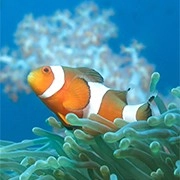Cat-Safe Indoor Plants

If you're a cat owner, you know your furry friend is curious about everything in your home—including your plants. That leafy corner can quickly turn into a snack spot if you're not careful.
Choosing the right plants keeps both your home beautiful and your cat safe, preventing a visit to the vet and keeping peace of mind intact.
Understanding Plant Toxicity
Not all indoor plants are safe for cats. Some contain toxins that can cause vomiting, drooling, or more serious health issues. Even seemingly harmless leaves can irritate your cat's stomach or skin. When selecting plants, check reliable sources for toxicity information, and always keep any potentially dangerous plant out of reach or in a high, cat-proof area.
Safe Plants for Cats
Many plants are completely safe for feline friends and even encourage playful interaction:
1. Cat Grass – Specifically grown for cats, it aids digestion and satisfies their nibbling instinct.
2. Spider Plants – Non-toxic, easy to grow, and cats often enjoy batting the long leaves.
3. Herbs like Basil and Mint – These add fragrance to your kitchen and are safe if your cat chews a few leaves.
4. Boston Ferns – Soft and lush, they are harmless even if your cat decides to paw or nibble.
These plants allow cats to explore and nibble safely while keeping your home green and lively.
Plants to Avoid
Certain popular houseplants can be hazardous:
1. Lilies – Extremely toxic to cats; ingestion can cause severe kidney problems.
2. Aloe Vera – Great for humans, but can upset your cat's stomach.
3. Philodendrons and Pothos – Their leaves contain calcium oxalate crystals, causing irritation and vomiting.
4. Dieffenbachia (Dumb Cane) – Can lead to mouth irritation and swelling if chewed.
Even a small bite can be harmful, so it's important to remove these from areas accessible to cats.
Placement Strategies
Where you place your plants makes a big difference. High shelves, hanging planters, or enclosed terrariums keep toxic plants away while still displaying them beautifully. Conversely, safe plants can be placed on lower surfaces where cats can interact without risk. Using barriers or decorative cages around more sensitive plants is another effective strategy.
Encouraging Safe Nibbling
Cats love to chew, so offering cat-safe options helps prevent them from turning to harmful plants. A small container of cat grass on the kitchen counter or windowsill often satisfies their craving. Rotate plants regularly to keep your cat interested and provide enrichment, reducing boredom and destructive behavior.
Maintaining Healthy Plants and Cats
Both plants and cats benefit from care. Water your plants according to their needs, prune dead leaves, and wipe dust off foliage to keep them healthy. For cats, monitor chewing habits and ensure they aren't showing signs of distress after exploring plants. Keeping both healthy creates a safe and lively home environment.
Mixing Safety with Style
Safe plant choices don't mean sacrificing style. Tall cat-safe plants like spider plants or Boston ferns add texture to your space, while small planters of herbs or cat grass brighten counters or windowsills. By carefully selecting plants, you can create a green, aesthetically pleasing home without risking your cat's health.

Enjoying a Green, Cat-Friendly Home
Living with cats and plants doesn't have to be stressful. With thoughtful plant selection, strategic placement, and a few safe options for your feline friend, your home can be vibrant and safe. Watching your cats explore a space full of safe greenery adds joy and interaction, proving that a cat-friendly home can also be beautifully green.

 · Nature Team
· Nature Team